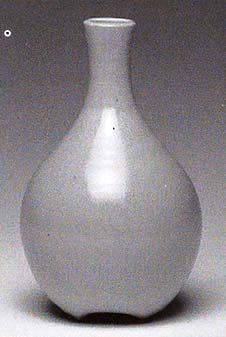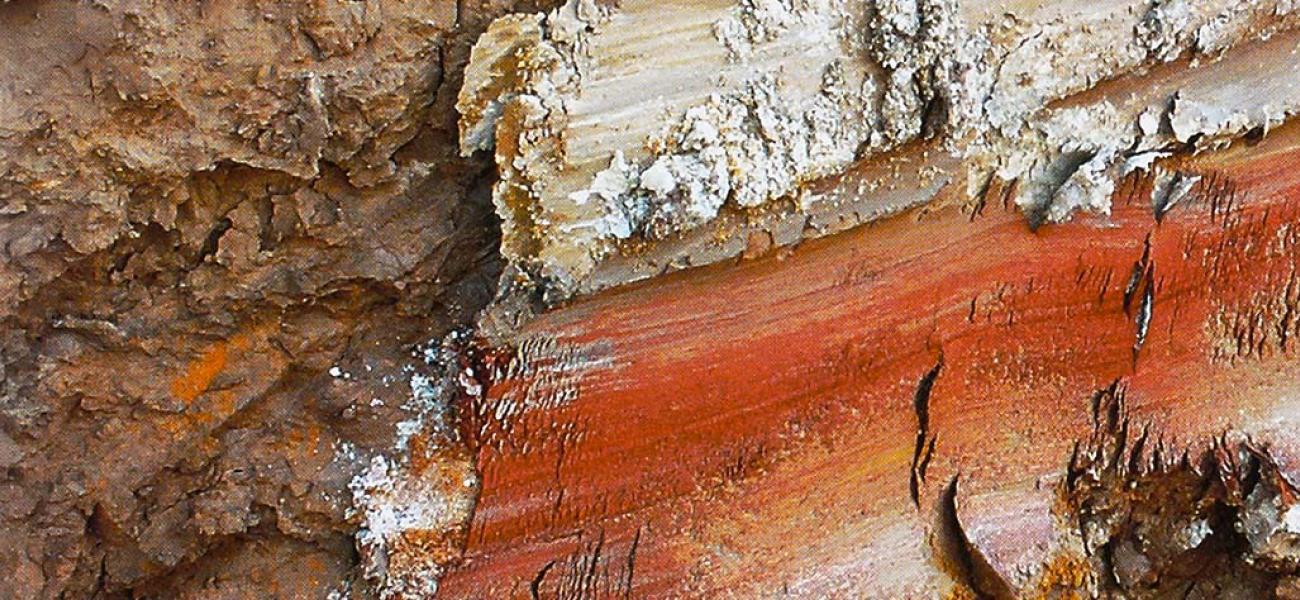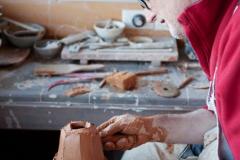Place-Based Making
I have spent the last twenty years researching, teaching, and making from an aesthetic based on maximizing the use of indigenous materials. Recently, I spent time thinking and writing about these issues during studies for a Master of Art Design and Environment degree finished in 2004. It is easy in ceramics to have such an approach tagged as rustic, Leachian and full of nostalgia. I wanted to put my approach in a more contemporary context, and to do so I chose to look back at the historical and philosophical basis for my making before I moved forward.
What I realized was that the influences on my making were based on Japanese aesthetics, albeit translated, modified, and often misunderstood by Western practitioners and writers. Those influences could just as well have been African, American or European; I don't think the geography here is as important as the aesthetic framework. Japanese artists create in an aesthetic framework that values highly expressive work, which seeks to harmonize with nature and natural materials. Their relationship with materials is reciprocal, and craft processes are intended to be both poetic and natural.
In Europe, unfortunately, the thinking that framed this aesthetic was rejected by a lineage of Western philosophical thought stretching back through Kant and Plato to the early Greeks. Western aesthetics privileges human superiority, and in so doing justifies the increasing manipulation and exploitation of the natural world. It is an aesthetic based on non-engagement, on the separation of humans from the rest of the natural world, and it embodies the concept that only by disinterested observation do we become capable of receiving aesthetic satisfaction.
Out of these conflicting influences arises another problem for the potter, that of useful-ness. Here a crucial difference between Japanese and Western aesthetics is starkly drawn; one seeks the expression of beauty through use, the other has sought to defend beauty against the incursions of utility. Trying to make forms blending utility and beauty, I find myself drawn to an aesthetic that seeks synthesis rather than one that promotes antithesis.

My aim was to focus and intensify my search for a natural, fluid integration of stimulus, materials and process. The sculptor Andy Goldsworthy has spoken of his art as a way of learning, of understanding, and his ephemeral work as a way of "breathing in." In a similar way, during field trips, my research method was that of a reflective wanderer, as I started recording poetic and photographic responses to the fragments of stimulus that caught my eye and framed my daydreaming. These visual and written reflections became my journals. It was from this recording of stimuli - my poetics of wandering- that the decompressive breathing-out of ideas began to develop.
After participating in field trips to various parts of my island state - to quiet and wild places in national parks and to the devastated and denuded environments of mining sites on the rugged west coast - I decided to bring this reflective wandering home and to look in more detail at the nearby environment of southeastern Tasmania. On the edge of the southern ocean, this is a place of eroded cliffs, refracted ocean swells, rock stacks, and the natural and human-imposed patterning in the tidal lagoon in front of my workshop.
It is a place where wildness exists relatively unmasked by a thin layer of human imprinta space between the constructed urban environment and an idealized mythic wilderness, where the cyclical forces and dynamic patterns of nature can still be felt.
Now, as I develop form and surface, a connection to place is there. Often in the background lie the forms of history, usually but not always pots, mostly from the diverse traditions that use indigenous materials in a synthesis of utility and beauty. This is a soft murmuring undercurrent, providing a link to a history of making and using that I value highly. Then there is the impact of place that slowly and subtly permeates. Collecting and processing materials for clay bodies and glazes, as well as gathering, cutting, and stacking black wattle to fuel my kiln, offer a chance at every stage to respond to the matter of place.
Beneath the black wattle bark lie the sinuous trails of burrowing grubs, and I make clay stamps from these to use in impressed repetitive patterns. The patterns of sun and wind on water and sand may be echoed in ropeimpressed patterns made from debris found on the shore; tool marks overlay these patterns just as the gridded patterns of oyster racks imprint the lagoon's tidal surface. The eroded edge of a concrete water tank suggested the jagged eastern skyline seen from my workshop and ended up in the altered edge of serving vessels. The fluted ridges on scallop shells and the negative space beneath a water-rounded dolerite boulder on a nearby beach also feed into the mix.
At home my place-based approach is based to a high degree on the resources I have close at hand: black wattle for firings in the wood kiln, feldspathic sandstone, dolerite, granites, and wood ash for glazes. However, when I teach and travel, place-based making means using the tangible, visual, and narrative raw materials of place in an expression of culture - an approach that can be equally applicable in an urban porcelain factory or a rustic craft retreat. While my home environment allows me to operate at maximum making-depth through a range of local materials, responding to place can happen on many levels, each with the potential to influence form, surface, and decoration. From vernacular architecture to abstracted landscapes, from industrial artifacts to the surfaces found in nature, not to mention the stories of lives, a rich and varied resource is always there.

To use refined industrial materials is to work with materials processed for a high degree of consistency, purity, and predictability- not necessarily the foundations for artistic growth. Does using local materials offer a different experience for both maker and user? Certainly for the maker I believe it does. For the user, it is in the story of matter and making that an expression of both place and maker unfolds. Users carry away a utensil that resonates strongly with their connection, however brief, to this place and time - a link through form, surface, and materials.
Technological change, evolving design culture, and the increasing impact of globalization all mitigate against appreciation
of the sustaining links of spirit that place-based making offers. Place-based making is holistic not fragmented, regional not global, and intimately connected to place, not disassociated from it. For me, all this can be conveyed through the potency of utensils. Through their engaging intimacy of scale and simplicity of purpose, they offer a connection to the immensity of existence in the world.
PIPECLAY LAGOON
Gouged bowl of clay,
in rounded softness
of low encircling hills.
Formed of finest fractions,
as the weathered crust of earth
moves and settles.
The tidal reflecting plane
shifts in constant play,
of wind and light on water.
Grids of oyster leases scar;
as linear human patterns
print on a natural curvature.
A pulsing daily flow
of ebb and flood,
slowly strips and conceals
in a gliding dance of sustenance.


